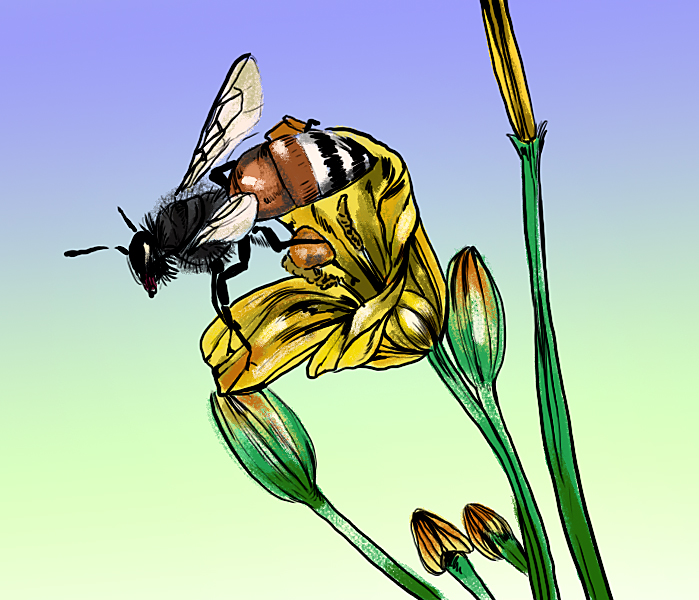Conservationist organization petitions to list American bumblebee as endangered
December 17, 2021
Editor’s Note: This article first appeared in the October 26 flipbook.
The American bumblebee may be listed as an endangered species after a study found their population declined by about 90%.
The American bumblebee, which provides pollination for many food crops, is quickly disappearing, threatening to throw off food chains, according to a petition by the Center for Biological Diversity, a nonprofit organization focused on endangered species. The petition attributed the decline to pesticides, habitat loss, disease, climate change and other factors.
The Fish and Wildlife Service will determine the species protection status after a 12-month review that has yet to begin.
“One out of three bites of food that we put in our body come through a plant that was pollinated by bees,” said Rich Hatfield, a conservationist biologist at Xerces, an invertebrate conservation group. “Everything from songbirds and small mammals, all the way up through grizzly bears, a significant portion of their diet comes from plants that were pollinated by bees.
While protections under the Endangered Species Act vary depending on the species, other bees such as the rusty patched bumblebee receive habitat assessments, and the federal government distributes information about dangerous pesticides to those near rusty patched bumblebee populations.
“Encouraging pollinator gardens in backyards and limiting or eliminating the use of pesticides, whether that’s on public property or in your backyard, makes the habitat healthier for bees,” said Jess Tyler, a staff scientist at the Center for Biological Diversity.
Dessie Tien, president of the Beevo Beekeeping Society, which manages on-campus beehives for honeybees, said native bees such as the American bumblebee have lost nectar sources due to destruction of native flora and irregular weather patterns.
“Native bees face an even greater risk of losing their habitat,” said Tien, a neuroscience and Plan II senior. “With climate change … there’s been a lot of rain, sometimes not so much at others. Some of the flowers have been blooming at different times as well. So, having their nectar sources compromised, which is what they use for food, that’s also a big issue as well.
The Fish and Wildlife Service currently prioritizes species most in danger, said Georgia Parham, a service public affairs specialist. The service is in the process of evaluating 350 species for protection. Parham said they will add the American bumblebee once its priority is determined.
Tien said the Beevo Beekeeping Society hosts events like waste-free potlucks, beeswax saran wrap parties and seminars with Central Texas beekeepers to try and preserve the insect’s population.
“The honeybee and the bumblebee are the most charismatic out of the bees, that’s the bees that everybody knows.” Tien said. “Hopefully with this, if the bumblebees were to be listed as endangered it would raise some warning bells that native pollinators are really at risk right now and we have to start protecting them if we want to keep living our lives the way that we do.”



